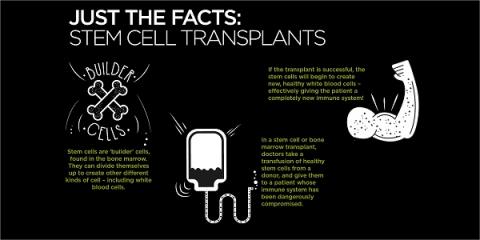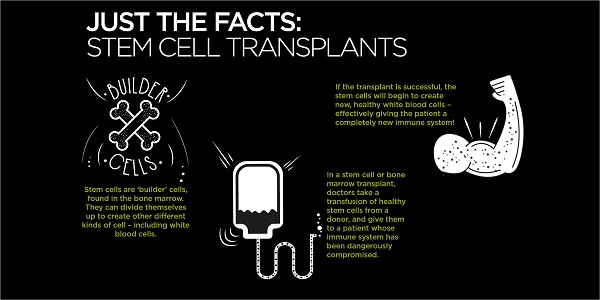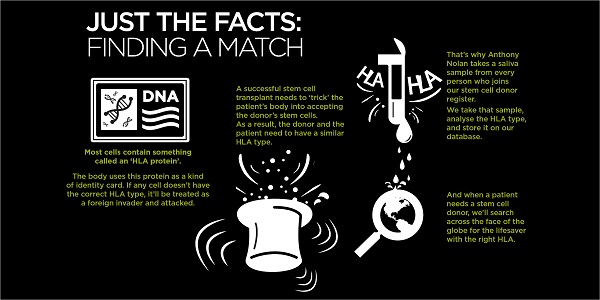For the latest data and information, visit our
Facts & Stats page
There are lots of misconceptions and myths floating around about stem cell transplants, and why someone with blood cancer might need to find a matching stem cell donor.
That's why we've put together some handy infographics to help you get the word out there. Enjoy!
Just the facts: blood cancer
- White blood cells belong to the body's immune system. They protect us against disease and infection.
- Blood cancers like leukaemia and lymphoma (as well as a host of blood disorders) prevent white blood cells from working properly.
- As a result, someone with blood cancer will find themselves vulnerable to infections and illness, unable to protect themselves.
Just the facts: stem cell transplants
- Stem cells are 'builder' cells, found primarily in the bone marrow. They can divide themselves up to create other different kinds of cell - including white blood cells.
- In a bone marrow or stem cell transplant, doctors take a transfusion of healthy stem cells from a donor, and give them to a patient whose immune system has been dangerously compromised.
- In the 21st century, the term 'bone marrow transplant' is actually quite misleading - 9 times out of 10, the donor will receive a series of hormone injections beforehand, and have their stem cells collected directly from their bloodstream.
- If the transplant is successful, the stem cells will begin to create new, healthy white blood cells - effectively giving the patient a completely new immune system!
Just the facts: finding a match
- Most cells contain something called an 'HLA protein.'
- The body uses this protein as a kind of identity card. If any cell doesn't have the correct HLA type, it'll be treated as a foreign invader and attacked.
- A successful stem cell transplant needs to 'trick' the patient's body into accepting the donor's stem cells. As a result, the donor and the patient need to have a very similar HLA type.
- That's why Anthony Nolan takes a saliva sample from every person who joins our stem cell donor register. We take that sample, analyse the HLA type, and store it on our database.
- And when a patient needs a stem cell donor, we'll search across the face of the globe for the lifesaver with the right HLA.
Just the facts: the full infographic



